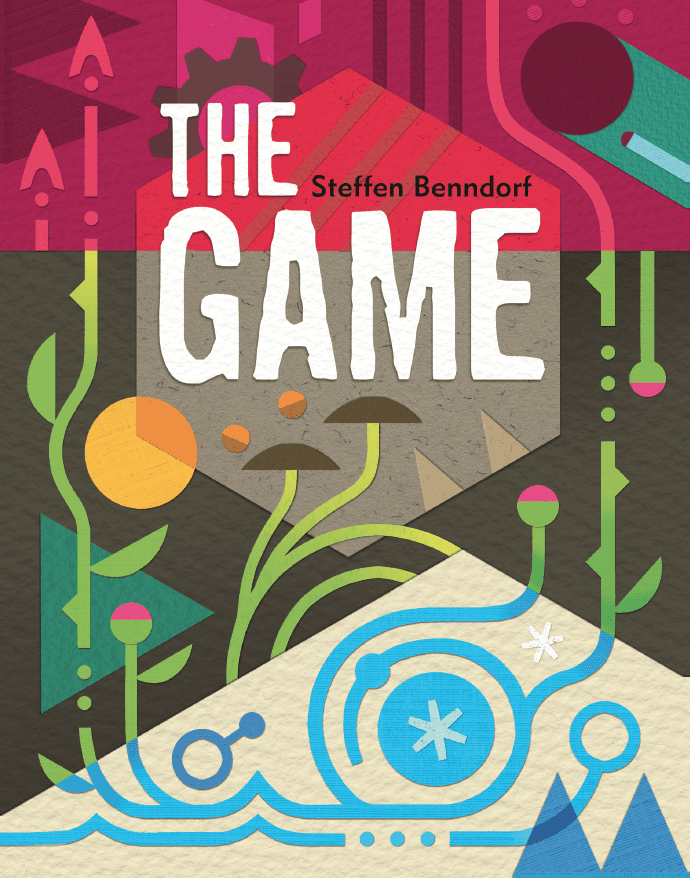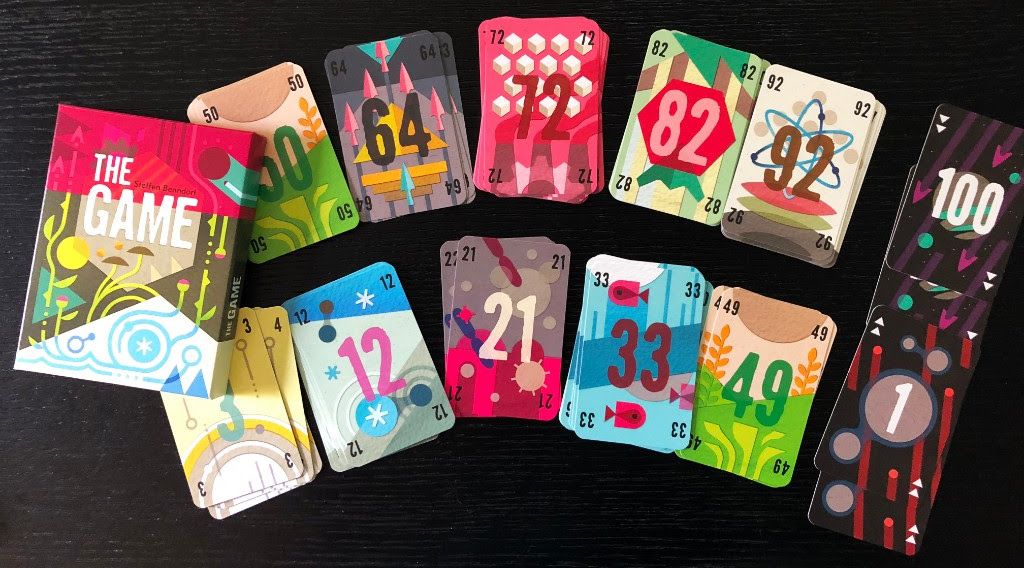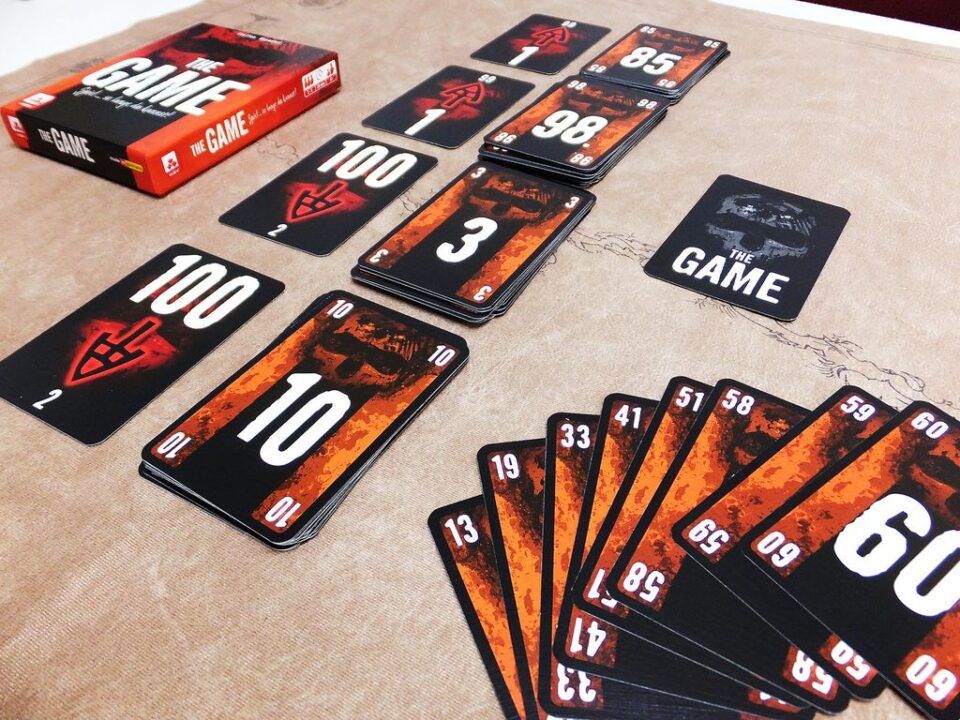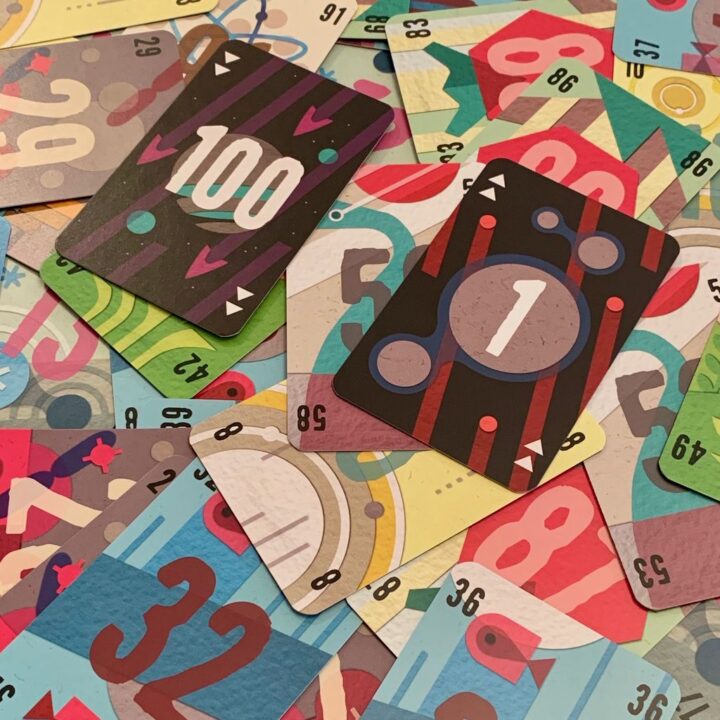Hey folks! Today, I’m diving headfirst into the wild world of ‘The Game‘. Buckle up, because this is a review of a game that combines challenge, strategy, and a pinch of luck. Together with my crew, we tested every aspect of it. From gameplay mechanics to replayability, player interaction, and difficulty level, we’ve left no stone unturned. So, if you’re curious about what makes ‘The Game’ tick and whether it’s worth your time, sit tight and let’s get started!
How It Plays
Setting Up
Start by shuffling the deck of cards. Each player gets a hand of cards, usually 6-8 depending on the number of players. Place two ascending piles and two descending piles in the center. You’re ready to go!
Gameplay
The goal is for all players to work together to play cards in ascending or descending order on the four piles. On your turn, you must play at least two cards from your hand. Communication is key but also limited – you can’t reveal your exact numbers! This rule leads to some hilarious and tense moments as you try to hint at the best plays without giving too much away.
Winning the Game
To win, you need to successfully play all the cards in the deck. It sounds easier than it is, trust me. If you can’t play the required number of cards on your turn, you lose. This balancing act of strategy and luck makes for a thrilling experience.
Want to know more? Read our extensive strategy guide for The Game.
Gameplay Mechanics in ‘The Game’
Alright, folks, gather ’round! Let me tell you about the nuts and bolts of ‘The Game.’ This is not just any game with a lazy name. This is a game named ‘The Game.’ I know, real original, right?
The crux of the game is simple yet devilishly tricky. You get a deck of cards numbered from 2 to 99. The goal? Get all those bad boys down in four piles. Two piles go up from 1, and two go down from 100. Sounds simple? Yeah, that’s what I thought until I found myself sweating like it’s the final round of a cooking show!
Each player has to play at least two cards from their hand every turn. The catch? You can only play cards in ascending or descending order. Oh, and did I mention you can’t tell anyone what cards you have? It’s like poker, but with less money and more frustration. It’s a cooperative game, meaning you’ll have to work together. But trust me, you’ll never trust your friends again after this. “Why’d you play a 50 on that pile?” You’ll be asking yourselves this in your sleep.
Every now and then, luck throws a wrench in your strategy. I played a few rounds where it seemed like the cards had a vendetta against me. Did I mention I dislike games where luck is a big factor? Yeah, here’s where ‘The Game’ stumbles a bit for me. It can lean heavily on luck sometimes, which can make it feel unfair.
Next up, let’s chat about how often you might want to yank this game off the shelf. Replayability is a key factor in any great game!

Replayability in ‘The Game’
When it comes to replayability, ‘The Game’ has a lot going for it. The core mechanics offer enough variety to keep things interesting for multiple sessions. Every game feels unique because the order of the cards you draw changes each time. It’s like shuffling a deck of endless possibilities!
The simplicity of the rules also adds to the replay factor. You don’t need to spend ages going through a rulebook or remembering complex strategies. It’s quick to set up and even quicker to play. My friends and I often find ourselves saying, “Just one more round!”
However, I won’t sugarcoat it. The basic nature of the game might not keep hardcore gamers entertained for long stretches. If you’re the type who craves deep strategic decisions, you might find ‘The Game’ lacking after several plays. That said, it’s perfect for a quick filler game between heftier board game sessions.
One of the aspects I love is that it scales well with different player counts. Whether you’re playing with two people or five, the game remains challenging and engaging. The game also lends itself to various house rules if you want to mix things up a bit. Trying different strategies or implementing new rules can add layers of fun.
If you appreciate games that can be reshuffled and played anew without feeling repetitive, ‘The Game’ fits the bill. It’s a reliable go-to when you’ve got a short amount of time but still want that satisfying gaming experience.
Next up, let’s chat about how ‘The Game’ really shines (or sometimes doesn’t) when it comes to Player Interaction. Spoiler alert: it gets interesting!

Interactive Dynamics in ‘The Game’
Player interaction is at the heart of ‘The Game.’ You and your friends must work together without revealing your hands. It’s like trying to cook a meal without knowing the ingredients. The tension is real, folks!
During each turn, you place one or two cards on one of the four piles in the center. The goal is to play cards in ascending or descending order, depending on the pile. Sounds easy, right? Think again. The twist is that you can’t explicitly tell others what cards you hold. So, it’s a game of hints and gut feelings. It’s like charades, but with numbers. And no one gets to draw a funny face.
I played this game with my friends, and it was a riot. My buddy Dave, known for his terrible poker face, kept making subtle (or not-so-subtle) facial expressions to give us clues. Spoiler alert: it didn’t help much, but it sure made us laugh!
One of the gems of ‘The Game’ is that it strengthens bonds. You’re not just playing cards; you’re reading your friends. You share a collective sigh when you hit a dead-end and a collective cheer when you narrowly escape disaster. It’s like you’re all on a sinking ship and every card played is a bucket of water thrown overboard.
Now, we move on to the difficulty level of ‘The Game,’ and trust me, it’s got its own flavor of spice. Time to see if this game’s difficulty will make us sweat or laugh it off!

Understanding the Difficulty Level of ‘The Game’
If you think ‘The Game’ is a walk in the park, think again. This little gem packs quite a challenge. On my first run, I thought I had it under control like a kid with a new toy. Boy, was I wrong. You have to place cards in increasing or decreasing order, but the catch is that you can’t communicate freely with your friends. It’s like playing charades but for numbers.
One of my buddies, Tom, swore he had the perfect strategy. So, we followed him. Needless to say, we didn’t survive long. The difficulty doesn’t come from complex rules but from the restrictions on communication. It’s like being on a silent group text with everyone trying to solve a puzzle.
There’s an interesting balance to strike here. You need to play cards to keep the game going, but you also need to keep options open for your teammates. This balancing act is where the real challenge lies. If you’re a fan of games that make you think and groan because you made a rookie mistake, then ‘The Game’ has got you covered.
It’s not insanely hard to the point where you’ll pull your hair out, but it’s no walk in the park either. You’ll feel a sense of accomplishment when you successfully navigate through a tough round.
So, do I recommend ‘The Game’? Absolutely. Just make sure you’re ready for some brain-teasing fun and be prepared to laugh at the collective mistakes along the way.

Conclusion
So there you have it, folks! ‘The Game’ offers a solid mix of cooperative play and brain-teasing fun. It’s perfect for a casual night with friends. While the luck factor can sometimes mess with your strategies, the game’s easy setup and replayability make it a winner in my book. If you’re into deep strategy without too much fuss, ‘The Game’ is a great pick. Just remember, it’s not for the hardcore strategists.
This concludes my review. Now go shuffle some cards and tackle ‘The Game’—before it tackles you!

